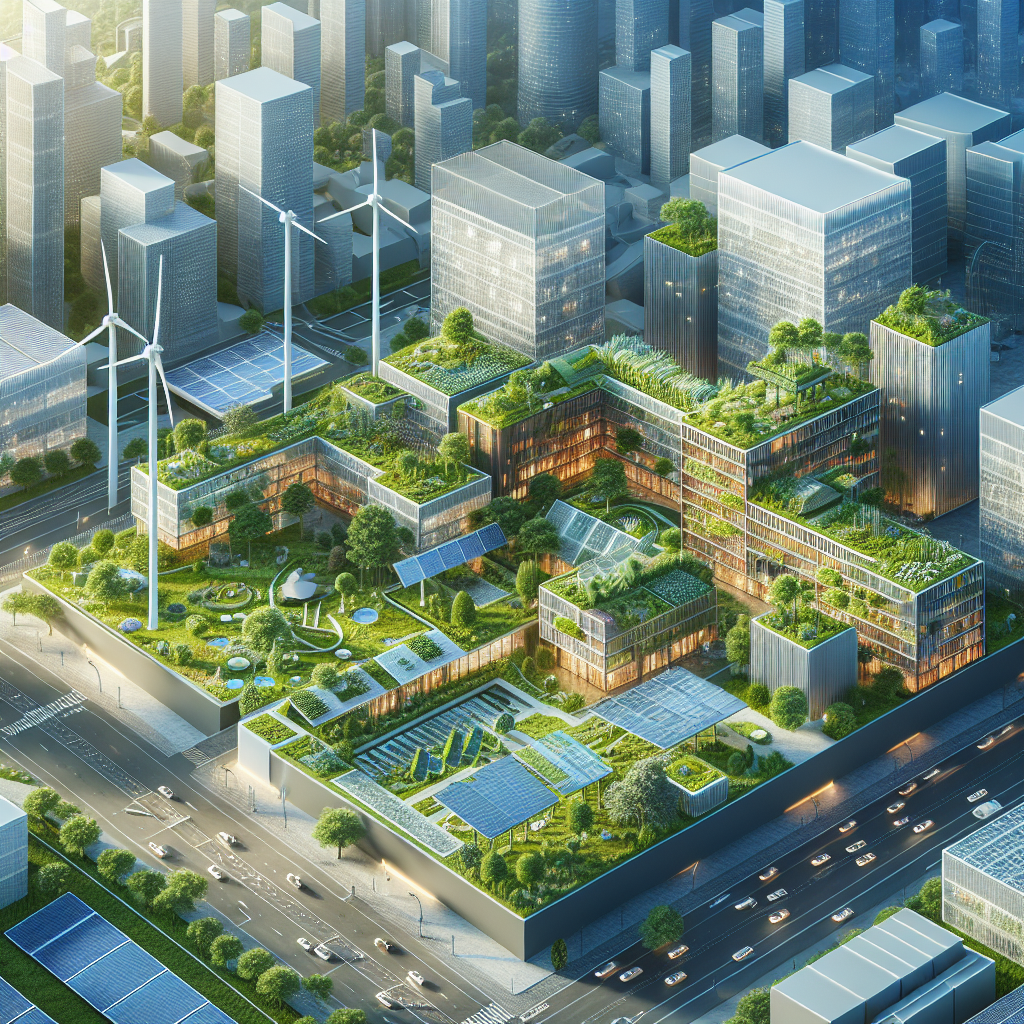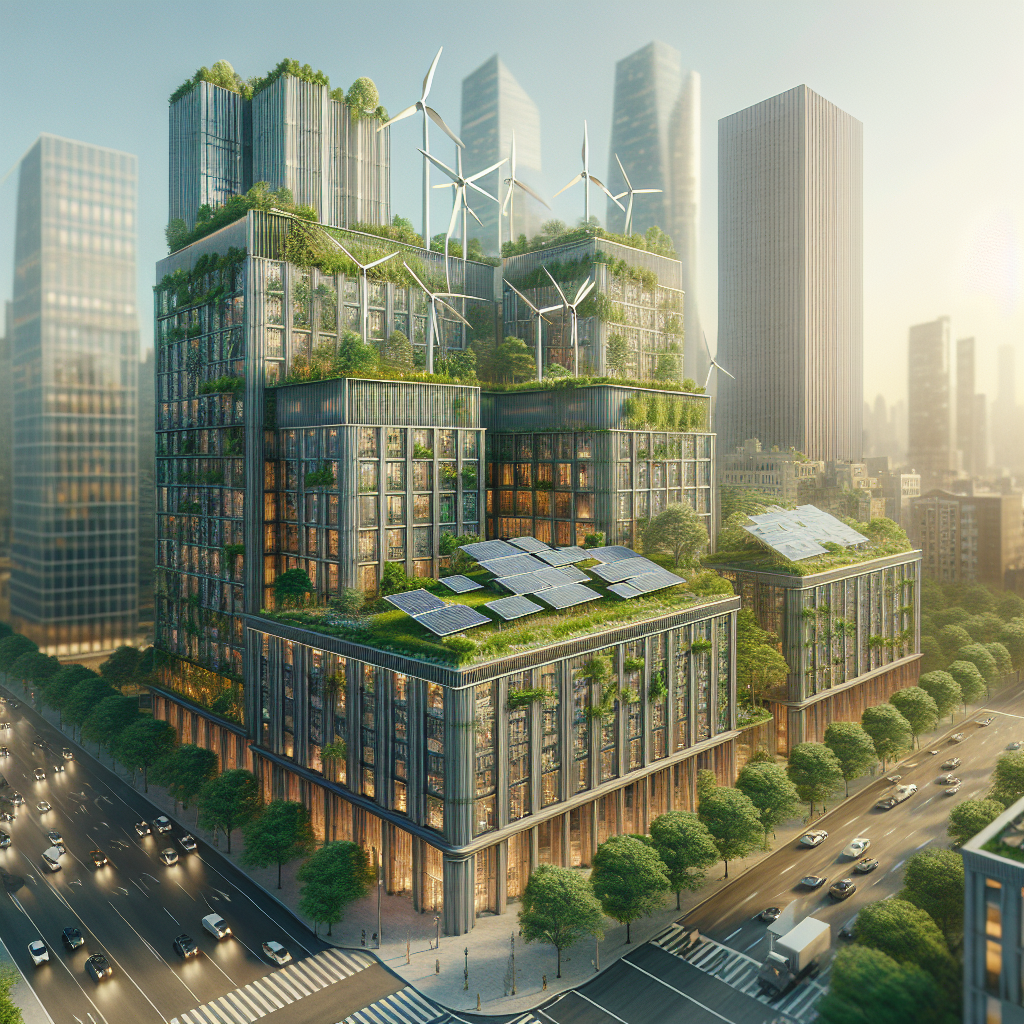Uncovering the Future: The Evolution of Sustainable Architecture Trends
- TIMELAPSE TRENDS

- Sep 15, 2024
- 3 min read
In a world where environmental consciousness is at the forefront of global discussions, the realm of architecture is experiencing a profound shift towards sustainable practices. Architects, designers, and innovators across the globe are pushing boundaries to create structures that not only stand out for their aesthetics but also for their eco-friendly design principles.
Sustainable Architecture: A Paradigm Shift
Sustainable architecture is more than just a buzzword; it signifies a fundamental shift in how we approach building design and construction. Gone are the days when architecture was solely about aesthetics and functionality. Today, architects are incorporating sustainable materials, energy-efficient systems, and green technologies to reduce the environmental impact of buildings.

Exploring new horizons in sustainable architecture.
Green Roofs and Living Walls
One of the prominent trends in sustainable architecture is the integration of green roofs and living walls. These innovative features not only enhance the visual appeal of a building but also provide numerous environmental benefits. Green roofs help regulate temperature, reduce energy consumption, and mitigate stormwater runoff, making them a popular choice for eco-conscious architects.
Net-Zero Energy Buildings
Net-zero energy buildings are another hallmark of sustainable architecture trends. These buildings are designed to produce as much energy as they consume, resulting in a net-zero carbon footprint. By harnessing renewable energy sources such as solar power and incorporating energy-efficient design strategies, architects are revolutionizing the way we think about building energy consumption.

Net-zero energy buildings: A step towards a greener future.
Adaptive Reuse and Circular Design
In an era where sustainability is paramount, adaptive reuse and circular design have emerged as key principles in sustainable architecture. Rather than demolishing existing structures, architects are repurposing and renovating buildings to reduce waste and preserve valuable resources. Circular design encourages a cradle-to-cradle approach, ensuring that materials are reused or recycled at the end of a building's life cycle.
The Rise of Biophilic Design
Biophilic design, which emphasizes the connection between humans and nature, has gained traction in the world of sustainable architecture. By incorporating elements such as natural light, green spaces, and natural materials, architects are fostering environments that promote health and well-being. Biophilic design not only enhances the aesthetics of a building but also contributes to the overall quality of life for its occupants.
Looking Ahead
As sustainable architecture continues to evolve, we can expect to see even more innovative trends shaping the built environment. From advanced energy-efficient systems to cutting-edge eco-friendly materials, the future of architecture is undeniably green. By embracing sustainable practices and pushing the boundaries of design, architects are leading the way towards a more sustainable and environmentally conscious future.
In conclusion, sustainable architecture trends are not merely a passing fad but a fundamental shift towards a greener, more sustainable future. As architects and designers continue to explore new frontiers in eco-friendly design, the possibilities for creating environmentally responsible buildings are endless. Let's embrace these trends, push the boundaries of sustainable architecture, and pave the way for a brighter, more sustainable future for generations to come.
Embracing Technology: Time-Lapse Cameras in Modern Architecture
In addition to sustainable materials and designs, modern architects are leveraging technology to shape the future of construction and building management. Time-lapse cameras have become an indispensable tool, helping architects create safer construction environments and making project presentations more engaging and effective.
Enhancing Construction Safety and Efficiency
During the construction phase, time-lapse cameras provide continuous monitoring of the site. This real-time oversight helps identify potential safety hazards promptly, ensuring a safer working environment. By documenting the construction process, these cameras allow for better project management, enabling teams to track progress, coordinate more efficiently, and address issues before they escalate.
Engaging Presentations and Project Showcases
Time-lapse footage brings projects to life in a dynamic way. Architects use these captivating visuals to present the evolution of a building from foundation to completion. This storytelling approach makes presentations more interesting and effective, allowing clients and stakeholders to visualize the project's development and appreciate the intricacies involved in the construction process.
Digital Representation and Public Engagement
The role of time-lapse cameras extends beyond construction. After a building is completed, cameras installed on rooftops and observation decks offer panoramic views, effectively turning the structure into a digital landmark on the internet. Spectacular restaurants, hotels, and business centers utilize these live feeds to attract the public, providing virtual tours that showcase stunning vistas and the building's unique features. This digital presence enhances the building's appeal and fosters a connection with a global audience.
Modern Architects Leading the Way
By integrating time-lapse technology into their projects, creative architects are redefining how buildings interact with both occupants and the broader public. This fusion of technology and design reflects a commitment to innovation, transparency, and community engagement, setting new standards in the architectural field.


